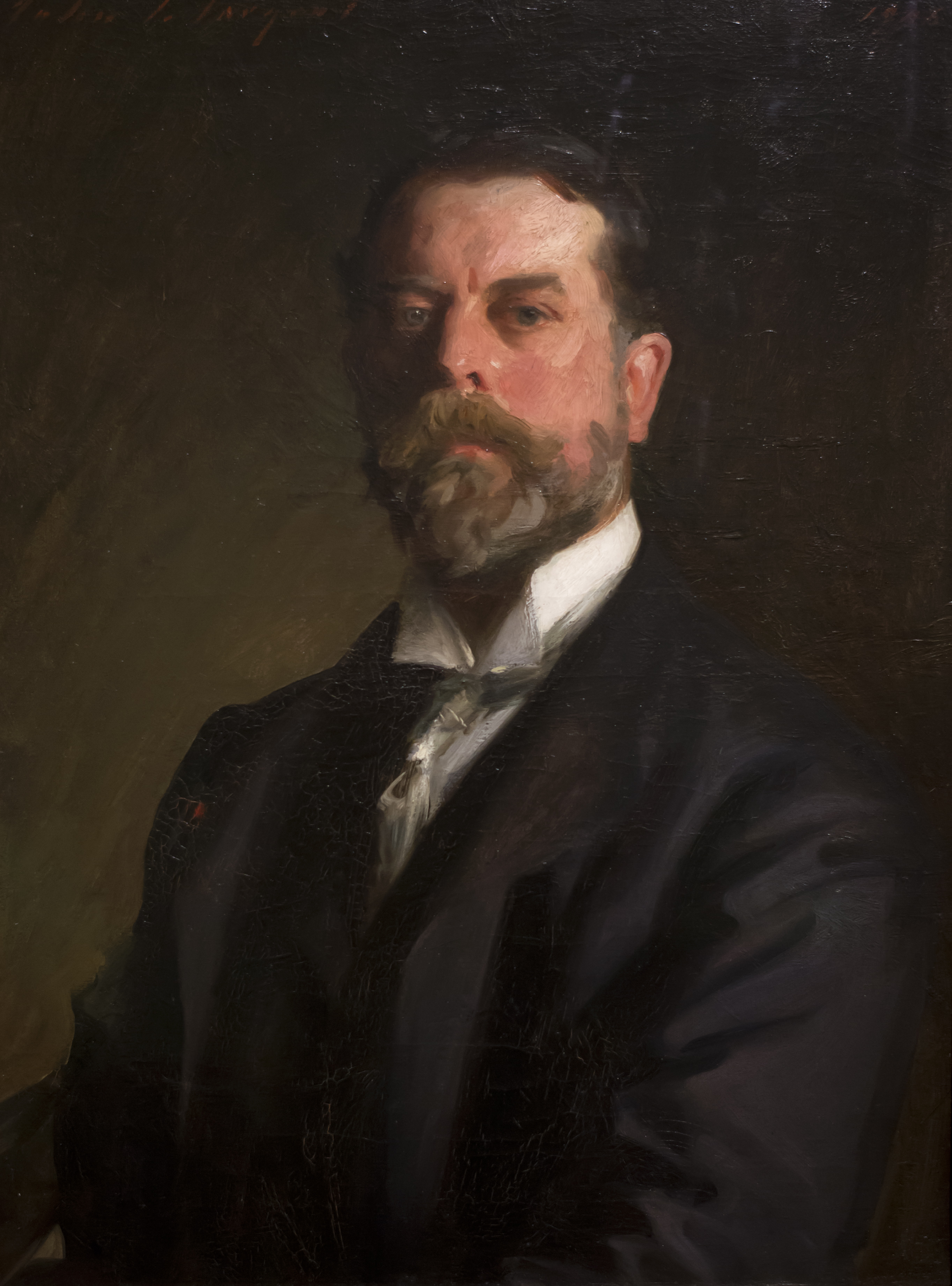



John Singer Sargent
John Singer Sargent was an American artist, considered the "leading portrait painter of his generation" for his evocations of Edwardian era luxury. During his career, he created roughly 900 oil paintings and more than 2,000 watercolors, as well as countless sketches and charcoal drawings. His oeuvre documents worldwide travel, from Venice to the Tyrol, Corfu, the Middle East, Montana, Maine, and Florida. His parents were American, but he was trained in Paris prior to moving to London. Sargent enjoyed international acclaim as a portrait painter, although not without controversy and some critical reservation; an early submission to the Paris Salon, his "Portrait of Madame X", was intended to consolidate his position as a society painter, but it resulted in scandal instead. From the beginning his work was characterized by remarkable technical facility, particularly in his ability to draw with a brush, which in later years inspired admiration as well as criticism for a supposed superficiality. His commissioned works were consistent with the grand manner of portraiture, while his informal studies and landscape paintings displayed a familiarity with Impressionism. In later life Sargent expressed ambivalence about the restrictions of formal portrait work, and devoted much of his energy to mural painting and working en plein air. He lived most of his life in Europe. Art historians generally ignored the society artists such as Sargent until the late 20th century. In a time when the art world focused, in turn, on Impressionism, Fauvism, and Cubism, Sargent practiced his own form of Realism, which made brilliant references to Velázquez, Van Dyck, and Gainsborough. His seemingly effortless facility for paraphrasing the masters in a contemporary fashion led to a stream of commissioned portraits of remarkable virtuosity. Still, during his life his work engendered negative responses from some of his colleagues: Camille Pissarro wrote "he is not an enthusiast but rather an adroit performer," and Walter Sickert published a satirical turn under the heading "Sargentolatry." By the time of his death he was dismissed as an anachronism, a relic of the Gilded Age and out of step with the artistic sentiments of post-World War I Europe. Elizabeth Prettejohn suggests that the decline of Sargent's reputation was due partly to the rise of anti-Semitism, and the resultant intolerance of 'celebrations of Jewish prosperity.' It has been suggested that the exotic qualities inherent in his work appealed to the sympathies of the Jewish clients whom he painted from the 1890s on. Nowhere is this more apparent than in his portrait "Almina, Daughter of Asher Wertheimer" (1908), in which the subject is seen wearing a Persian costume, a pearl encrusted turban, and strumming an Indian tambura, accoutrements all meant to convey sensuality and mystery. If Sargent used this portrait to explore issues of sexuality and identity, it seems to have met with the satisfaction of the subject's father, Asher Wertheimer, a wealthy Jewish art dealer. Foremost of Sargent's detractors was the influential English art critic Roger Fry, of the Bloomsbury Group, who at the 1926 Sargent retrospective in London dismissed Sargent's work as lacking aesthetic quality: "Wonderful indeed, but most wonderful that this wonderful performance should ever have been confused with that of an artist." And, in the 1930s, Lewis Mumford led a chorus of the severest critics: "Sargent remained to the end an illustrator ... the most adroit appearance of workmanship, the most dashing eye for effect, cannot conceal the essential emptiness of Sargent's mind, or the contemptuous and cynical superficiality of a certain part of his execution." Part of Sargent's devaluation is also attributed to his expatriate life, which made him seem less American at a time when "authentic" socially conscious American art, as exemplified by the Stieglitz circle and by the Ashcan School, was on the ascent. After such a long period of critical disfavor, Sargent's reputation has increased steadily since the 1950s. In the 1960s, a revival of Victorian art and new scholarship directed at Sargent strengthened his reputation. Sargent has been the subject of large-scale exhibitions in major museums, including a retrospective exhibition at the Whitney Museum of American Art in 1986, and a 1999 "blockbuster" traveling show that exhibited at the Museum of Fine Arts, Boston, the National Gallery of Art Washington, and the National Gallery, London.